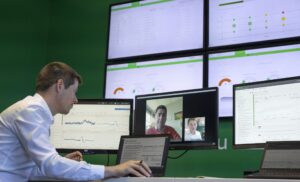If you’re an IT administrator or manager of some sort, it’s increasingly likely that you’re responsible for more than one site. In many cases, it may be more like 5, 50 or even 500 sites, many if not all of them with no dedicated IT staff.
With little in the way of IT staff to help manage those sites, companies need all the help they can get in terms of technology that can do the job. Following are four tried and true ways that you can do more with less by effectively monitoring remote sites.
1. Deploy remote power management
Many power distribution units (PDUs) and outlet strips are now available that can be controlled remotely. From a central location, you can remotely cycle power, shed load and sequence outlet power to ensure devices turn on correctly and safely.
Think about what that means in practice. When a server is hung you can simply cycle its power off and on to restart it, rather than trying to walk someone on site through the process via phone or sending out professional IT help. Remote power management also enables you to ensure unused outlets remain off, so nobody will use them and risk accidentally tripping a circuit breaker.
2. Monitor environmental conditions
When you’re hundreds of miles away, you have no way of knowing what kind of environmental conditions may be affecting your remote IT systems – that is, unless you install probes to capture information on temperature, humidity, smoke and leaks. You can also install sensors that detect when doors open and if there’s motion inside a remote server room or wiring closet.
Such systems serve at least a couple of important purposes. For one, they’ll alert you to situations that can be potentially damaging to IT equipment, such as water leaks or unauthorized visitors. Second, with data from temperature and humidity probes, you’ll know whether the cooling and ventilation is adequate for the site and can take steps to correct any problems before they cause real harm.
3. Deploy pre-installed equipment
Customers can increasingly buy racks and enclosures that can be shipped with servers and other IT equipment already installed inside. That means IT can install, configure and test the equipment before shipping it to the remote site. Alternatively, some vendors will sell the enclosures pre-configured to your specs.
Such a strategy can dramatically reduce installation time, given the system is all configured and validated. It can also dramatically decrease the need for on-site IT expertise during installation. This can result in significant cost savings.
4. Centrally manage multiple sites
A central management system can aggregate data and statistics from all of your sites and present it in on a single console, via an easy to read user interface. A good vendor-neutral system will be able to handle all the various devices and systems you need to manage, with the ability to send proactive alerts to the most appropriate people.
With such a system you don’t need to log in to each remote system individually, which gets increasingly impractical as the number and size of remote sites grows. What’s more, the systems allow for multi-user access, enabling around the clock coverage and the ability for specialists to handle their respective portions of the infrastructure.




Conversation
This is all well and good but the most recent version of firmware (Six something? ) for the Administration cards in SMT units broke the ability to communicate with the units over our network. The earlier version worked just fine. We have two remote broadcast sites that have two SMT units each. The two sites are hard routed from our “non routable network” to these locations via a wireless ISP. All other IP based units work at the site and have continued to work. I cannot reach the network card internal webservers in the SMT units. All email and SMT alarms will not pass as well. We have short term battery backup but I have to rely on my other control and alarm systems to notify me of electrical service problems. As I have other fires to put out (or fish to fry in those fires…) I have been dealing with it by not chasing down this problem. I will gladly provide more information but it was the “Schneider branded” update that broke the system. It is almost as if this version requires open ports to send/receive somewhere outside of my network. All the other various versions of UPS with network cards within the immediate network work.